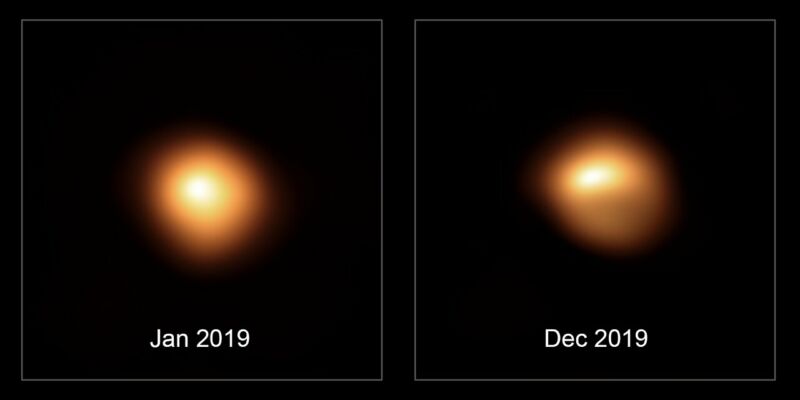New image shows Betelgeuse isn’t dimming evenly

Enlarge (credit: ESO/M. Montargis et al.)
From Earth's perspective, one of the brightest stars in the sky is the red supergiant Betelgeuse. Found in the constellation of Orion, it's large enough and close enough that when it's destroyed in an inevitable supernova, it will put on a spectacular light show for anyone who happens to be on Earth to see it. So when the star started dimming late last year, speculation rose that the show was about to start.
Because Betelgeuse is so large and so close, it's actually possible to resolve some details of its surface rather than simply seeing it as a point source of light. Some astronomers have used the Very Large Telescope at the European Southern Observatory to do just that, and they've found something extremely weird: Betelgeuse's dimming isn't even.
As you can see in the before-and-after images above, Betelgeuse was more or less spherical about a year ago. By December, it was most decidedly not. While the upper hemisphere of the star looked much as it had a year earlier, the lower portion looked diffuse and distorted, with at least two regions of distinct brightnesses.
Read 5 remaining paragraphs | Comments